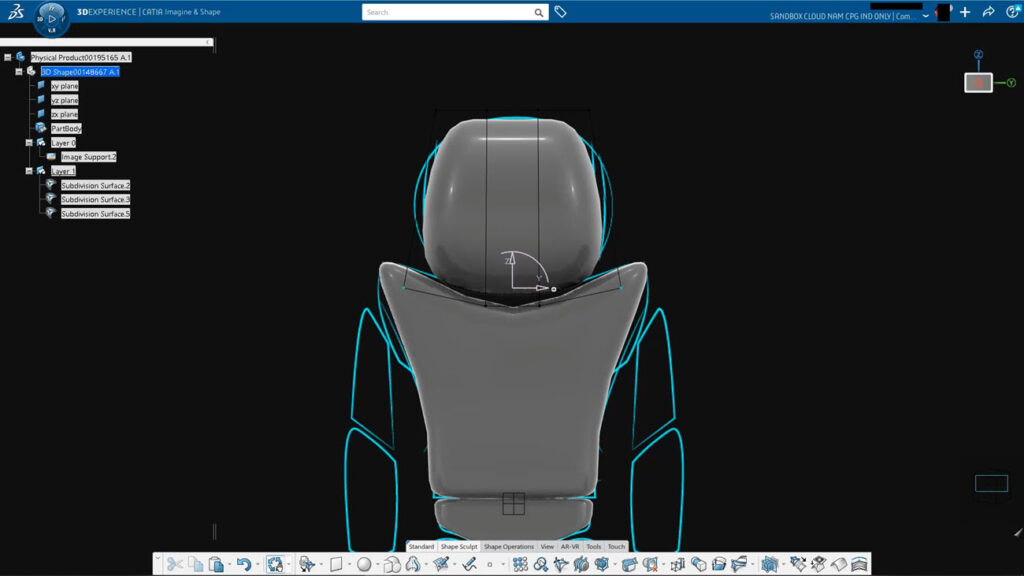How do manufacturers navigate the complexity of adding integrated sensors, smart chips, networking capability and software to create innovative, reliable smart devices for the home? Learn the secret to successful smart product development. Consider platform-based MBSE to improve your product development in the rapidly evolving smart home product market.
Product complexity keeps increasing
The integration of electronics, mechanical systems, and software in smart consumer devices introduces new challenges for research and development teams. Whether designing a robotic vacuum, or a humanoid robot, automated garden tools, or ebikes and baby gear manufacturers need skilled engineers across multiple disciplines. Intuitively engineering managers know that incorporating connected sensors, cloud computing, software, and artificial intelligence requires real-time collaboration across engineering disciplines.
Quality drives market share
Product quality and reliability are critical to company reputation and market share. Consumers expect easy to use, products that will last – especially for higher priced home automation products. It’s essential for manufactures to deliver high-quality smart home products to protect and grow a their presence in this competitive space.
Embracing platform-based model-based systems engineering (MBSE)
A growing number of companies consider Model-Based Systems Engineering (MBSE) as a critical tool to manage the complexity of systems integration. The ability to apply a ‘systems of systems’ approach is among the many benefits of MBSE. All disciplines (i.e., mechanical, electrical, software, and others) to use what’s known as SysML, or Unifying Systems Modeling Language. Using the SYSML standard language simplifies problem definition and agreement on a solution or solutions.
SysML, unifying systems modeling language
Using a modeling language that unifies multiple [software] languages is essential. The common language employed by No Magic* users, Systems Modeling Language, known as SysML, allows all project stakeholders to share systems information. By offering a more complete representation of systems, SysML helps reduce errors and ambiguities during systems development processes. (*No Magic was acquired by Dassault Systèmes in 2018)
Trace requirements, align teams
MBSE serves as the framework to enable teams to define and trace product requirements using precise 3D product models from the early concept phase. Using 3D product modeling and virtualization software that uses virtual twins of the future product significantly reduces the need for expensive, time-consuming late-stage modifications. And, a platform-based approach not only helps manages system complexity but also enables collaboration across engineering disciplines and other product stakeholders (purchasing, manufacturing planning, marketing) so all are aligned and products launch to market faster.
An example of MBSE in action: Building a home robot
Using a practical example of the effectiveness of a platform-based MBSE approach, consider the development of a Humanoid robot. A manufacturer developing a new line of human-like robots for the home uses MBSE on a digital platform. This offers engineers to:
– Apply hundreds–or thousands–of simulations on the product virtual twin to optimize the product design;
– Ensure seamless integration of IoT (Internet of Things) connectivity via Bluetooth or Wi-Fi
– Validate the product design meet requirements (i.e., safety and performance standards);
– Seamlessly integrate of components and hardware systems; and
– Unify multiple [software] languages and integrate software and hardware with SysML.

MBSE + 3DEXPERIENCE platform for collaborative design and problem-solving
To highlight the benefits of easy, real-time collaboration among engineers (i.e., systems, electrical, mechanical, and software) consider how an R&D team successfully integrates camera functionality in a home robot. A platform approach allows a global team universal access to all data and models. Collaboration using the same model allows faster validation and verification that the camera meets specifications. Simulating the fit, form and function of the camera in a virtual twin of the robot allows engineers to resolve design issues, align with suppliers on material and part availability, and communicate with manufacturing planning to meet constraints and much more.
MBSE impact on the efficiency of product development
MBSE not only makes the design and development processes more efficient resulting in better products to delight customers, it also removes engineer’s non-value added tasks freeing up time for innovation. And, companies are more nimble because a platform-based MBSE methodology offers a real-time view of product development, allows faster feedback on product performance and empowers teams to make informed decisions to adapt to changing requirements swiftly.
A look ahead
Many consumer goods companies seek to simplify home automation and connect everyday products to make consumers lives simpler. The complex nature smart products (basic products like a robotic vacuum to very complex human-like robots) requires the right tools to solve product development challenges. A solution is required that integrates requirements, systems architecture, cross-disciplinary modeling and simulation and virtual prototyping – including embedded software, validation and verification into one unified, collaborative and open environment, like the 3DEXPERIENCE® platform and it’s MBSE solutions. This approach proves more critical when Artificial Intelligence features become part of the product specifications.
Key benefits of MBSE
A few key benefits: end-to-end traceability, change management support, agility (through informed-decisions), and simplified quality and compliance to meet requirements and certification standards. Embracing MBSE on the 3DEXPERIENCE platform offers the secret to successful product development in the rapidly evolving smart home product market.

